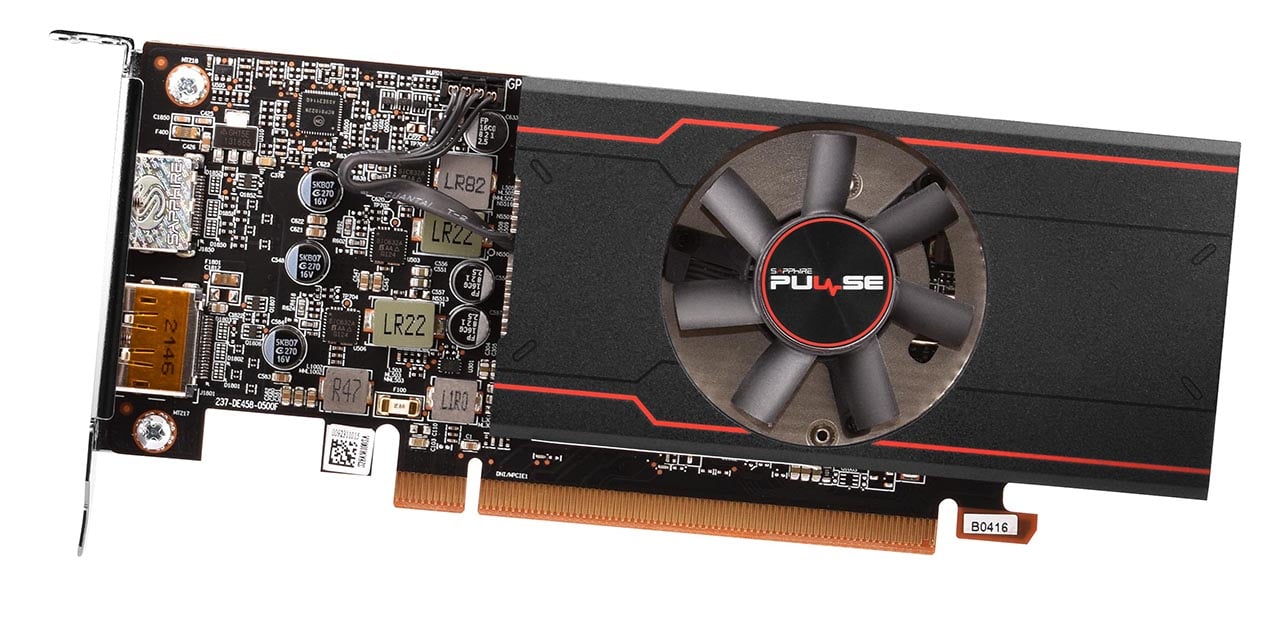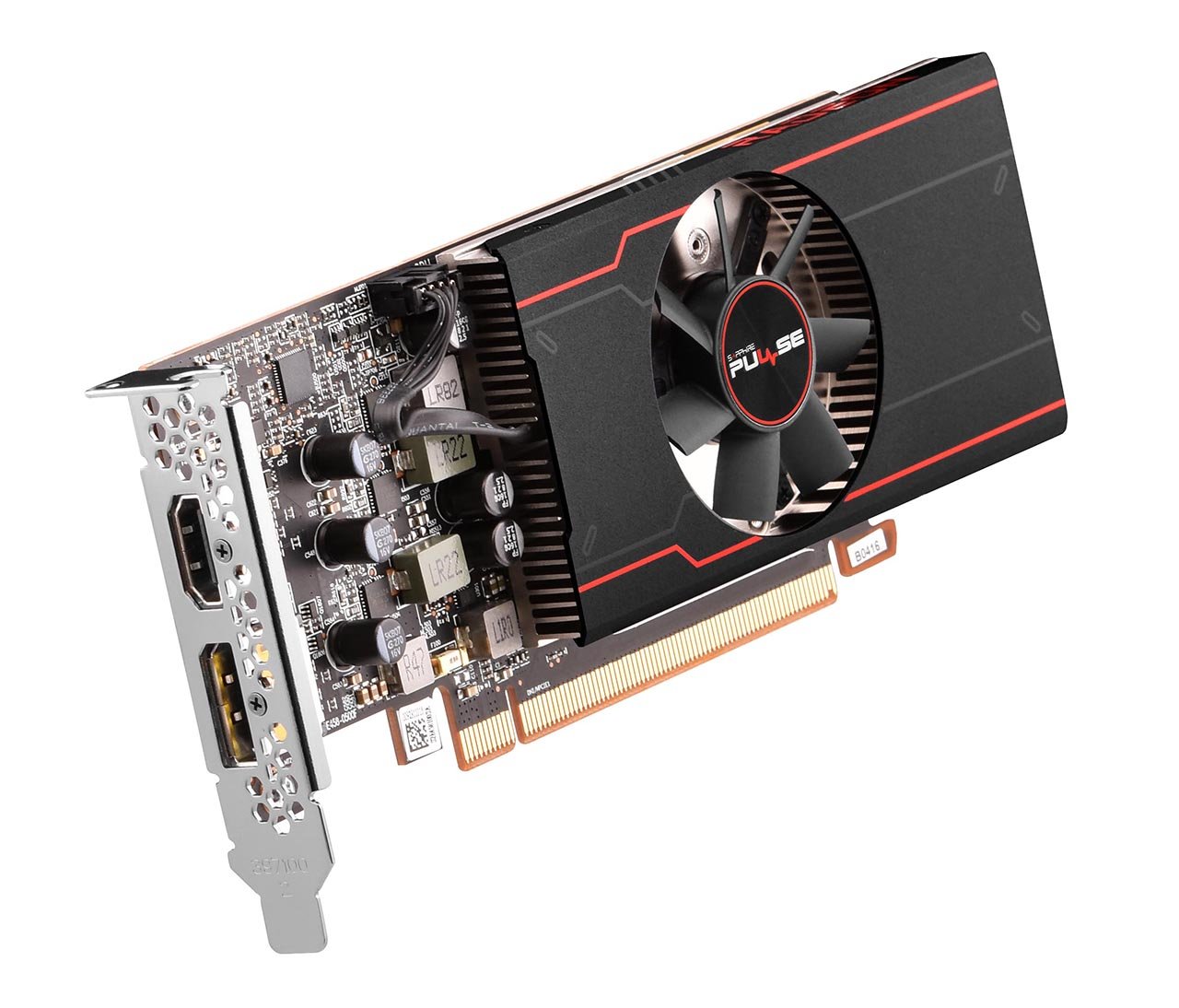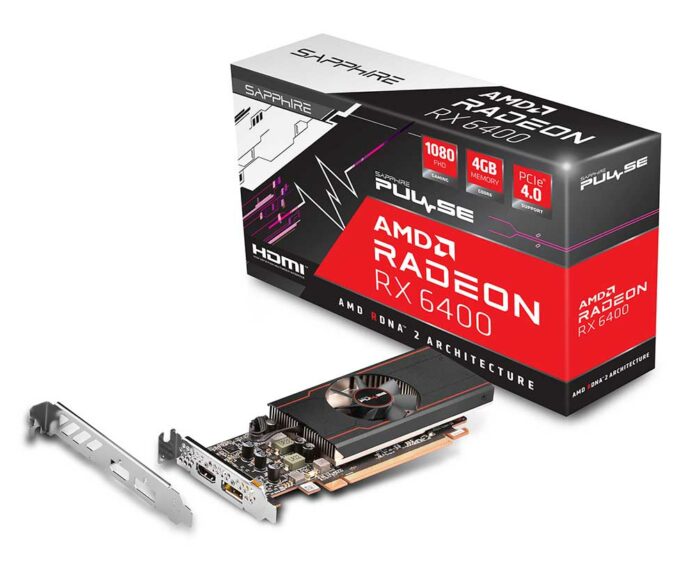Announced as the most cost-effective way of getting hold of RDNA 2-infused graphics on the desktop in January 2022, Radeon RX 6400 was initially limited to OEM system builders. That state of affairs changed yesterday as AMD made it available for the DIY component market, priced from $159.
Radeon RX 6400 is a pared-down version of RX 6500 XT. Both use the Navi 24 die built on TSMC’s 6nm process, but RX 6400 trims performance further by dropping horsepower down from 1,024 shaders to 768. Core boost clock is much lower, too, coming in at 2,321MHz vs. 2,815MHz. Memory bandwidth is still supplied by a 64-bit-wide bus connecting to 4GB GDDR6 modules running at an effective 16GT/s. Like the RX 6500 XT, connection to the system is via a PCIe 4.0 x4 interface.

RX 6400’s main claim to fame is the prospect of single-slot, half-height cards made possible by a meagre TDP starting at just 53W, or half that of RX 6500 XT.
Sapphire does exactly that with the RX 6400 Pulse card. Measuring 170 x 56.2 x 17.2mm and consuming 55W – there is no additional power connector here – it’s a fine fit for a small-form-factor PC.

Offering HDMI and DisplayPort outputs, Sapphire includes an extender I/O bracket designed to make the card fit in regular chassis. Speeds are kept in line with AMD’s clocks, and we don’t expect any partner to deviate from them for this entry-level model.
A quick look around retailers shows RX 6400 is mostly on pre-order at around the £200 mark. Don’t expect stellar performance, however, as it ought to benchmark at around 75 per cent of the RX 6500 XT’s capability, translating to just-passable FHD numbers. This is a card primed for framerate-boosting technology such as Radeon Image Sharpening, FidelityFX Super Resolution, and Radeon Super Resolution.


